Gothic Art – Explore Art and Sculpture from the Gothic Period
The style of European Gothic paintings, goth art, and Gothic sculptures that bridged medieval Romanesque artworks with the works of the Early Renaissance period is referred to as Gothic artwork. The Gothic era is divided into three distinct Gothic periods known as Early Gothic, High Gothic, and International Gothic. Between 1150 and 1250, Gothic artwork flourished in the north-central French region known as Ile de France and its surrounding territory, and subsequently expanded throughout northern Europe. Let’s take a deeper look at the history of Gothic period art.
Contents
The History of Gothic Artwork
Because Gothic art was purely religious, it added real credence to the expanding influence of the Church in Rome. This not only motivated the general population and its leaders, but it also solidly cemented the link between faith and the arts, which was one of the pillars of the Italian Renaissance. Simone Martini and Giovanni Pisano of the Sienese School of painting were two well-known medieval Gothic artists.
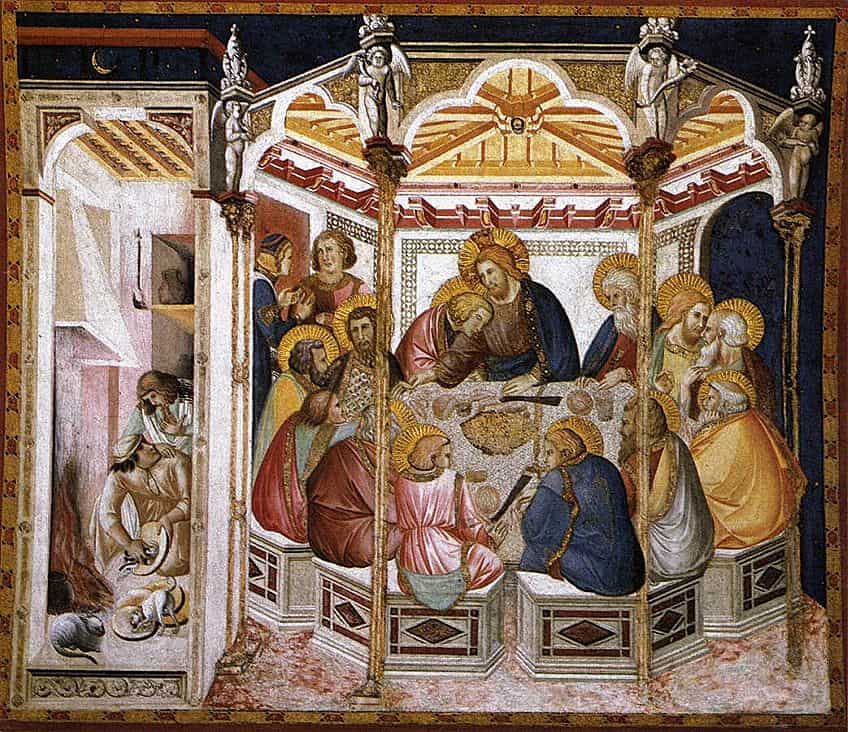
The Origins of Gothic Artworks
Gothic art first appeared in Île-de-France in the early 12th century at the Abbey Church of St Denis. The style extended quickly from its roots in construction to Gothic statues, both massive and intimate in scale, textile artworks, and Gothic painting, which took many forms, including stained glass, fresco, panel painting, and illuminated manuscripts. Monastic orders, particularly the Carthusians and the Cistercians, were notable architects who spread and created various varieties of the style throughout Europe.
Regional architectural variants persisted even after, by the late 14th century, a cohesive worldwide design style known as International Gothic had emerged, which lasted until the late 15th century, and later in many places.
The Religious Nature of Gothic-Era Art
The vast majority of the artwork created during the time was religious in nature, whether funded by the clergy or by the people. Gothic artworks were frequently typological in nature, expressing a view that the incidents of the Old Testament foreshadowed those of the New, and that this was the essential purpose of their creation. These artworks and church decorations depicted Old and New Testament subjects side by side.

The Gothic period corresponded with a significant revival of the devotion of Mary, in which the visual arts played an important role. Artworks of the Virgin Mary progressed from Byzantine hieratic kinds to more intimate and personal forms, and cycles of the Virgin’s life were quite popular. In Italy, artists such as Fra Angelico, Giotto, and Pietro Lorenzetti, as well as Early Netherlandish painters, introduced realism and more genuine humanity to art.
Western painters and their patrons grew much more confident in creative iconography, and much more innovation is apparent, while most artists continued to employ borrowed formulae.
Gothic-Era Iconography
Changes in theology influenced iconography, with portrayals of the Assumption of Mary gaining popularity, as well as religious practices such as the Devotio Moderna, which created new depictions of Christ, emphasizing his suffering in the world and frailty, in a concurrent progression to that of representations of the Virgin. Even in depictions of the Last Judgment, Christ was now typically represented with his chest exposed to emphasize the scars of his Passion.
Saints were depicted more often, and altarpieces included saints important to the congregation or donor.
Types of Gothic Artwork
Originally, Goth art was referred to as “French Art,” indicating France’s importance in the development of this style. The Gothic period is primarily defined by Gothic architecture, and it does not perfectly correspond to the progression of style in Gothic sculptures at either its beginning or end. Big tympanums, particularly surrounding entrances, remained on the exterior of large churches, as did rows of sculpted figures.
Gothic paintings did not emerge until approximately 1200, more than half a century after the advent of Gothic statues and architecture.
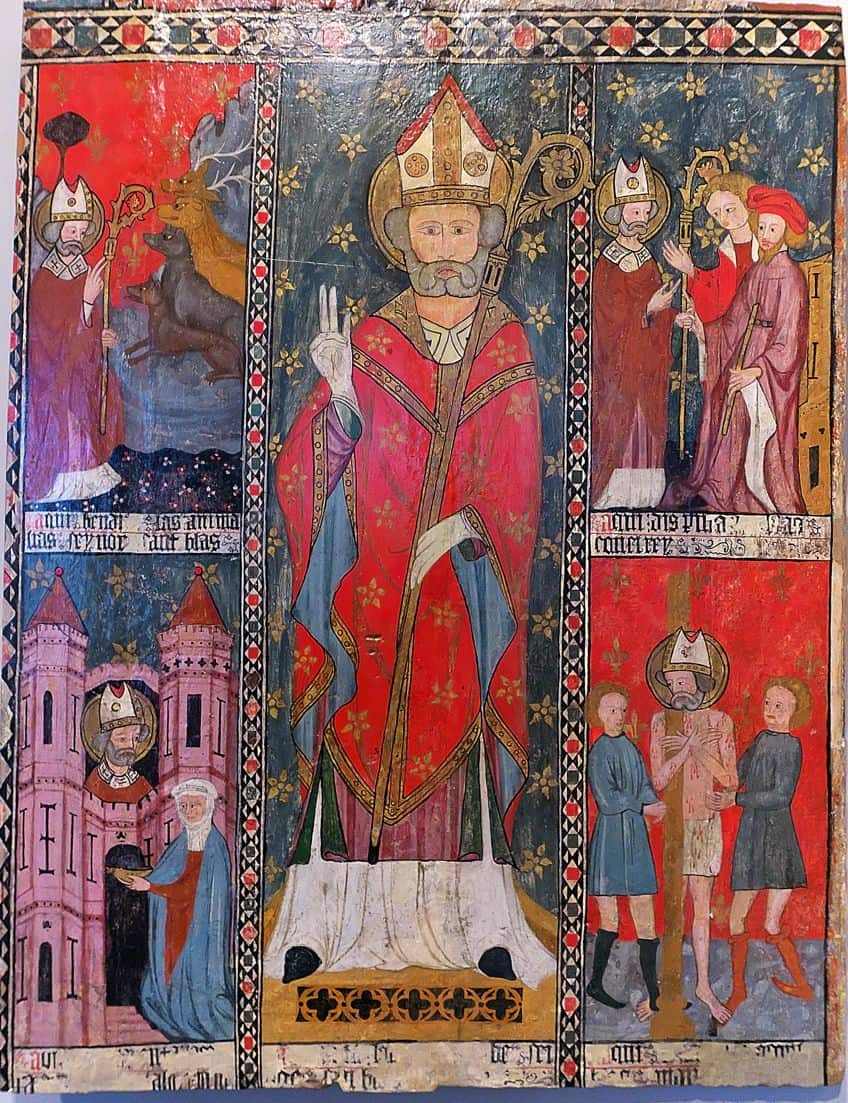
Gothic Sculptures
The finest Gothic sculptors were focused on architectural embellishment, much as they were in the Romanesque era. The most significant examples of stone Gothic sculptures that have survived are on portals, such as those in the church of Saint-Denis, which integrated aspects that persisted throughout the Gothic era: carved figures positioned in the voussoirs, and more representational carvings connected to the portal sides.
Saint-Denis is somewhat underwhelming in its current state; the side figures have been removed, and the remainder has been substantially reconstructed.
The Emphasis on Greater Realism in Early Gothic Sculpture
The overall effect is now more visible on the west front of Chartres Cathedral, where the portals depict the evolution of Gothic architecture. When the gateways at Chartres are compared to those at Reims in the 13th century, it is clear that the advancement of sculpting throughout this early phase of Gothic artwork is toward increasing realism and away from the relatively wooden feel of Romanesque sculptures. This was accomplished through a sequence of artistic impulses rather than continuous progression.
The earliest of these impulses may be observed in the sculptures on Chartres’ west facade.

The people are barely “real”, with their exaggerated motions and finely pleated clothing, and their shapes are intimately matched with the architectural arrangement. Similar examples may be found in the cathedrals of Le Mans, Angers, Bourges, and Senlis. The second innovative force emerged from the Mosan art school, in the metallurgy of Nicholas of Verdun, which was distinguished by elegant, curved figures and delicate Greek-like drapery. A more restrained form of this design may be observed in the major portals of Chartres’ transepts, as well as in Reims Cathedral. A third realism trend in Gothic statues appears to have emerged at Notre Dame Cathedral in Paris, following on 10th-century Byzantine predecessors.
Instead of whirling draperies and curving figures, this style features figures with a straight, upright look and controlled motions.
The western front of Amiens Cathedral is a great example of this style. A fourth realism trend emerged in Reims, thanks to a craftsman known after his most renowned piece, the Joseph Master. Rejecting both Amiens’ gestural constraint and the Muldenstil’s drapery, he created figures with traits that would continue for the next 150 years: subtle postures and expressions, and thick drapery flowing in long V-shaped pleats that surround the person. Late Gothic artists and illuminators, especially the famous artist Enguerrand de Charenton, were heavily influenced by Gothic cathedral sculpture.
The Development of High Gothic Sculpture
In general, architectural sculpture declined throughout this time period. This is hardly surprising given Rayonnant Gothic architecture’s emphasis on geometric patterning. A few portals, such as those located in the Bourges Cathedral’s facade, were erected, although their significance is limited. In contrast, the more personal kind of sculpture was rapidly developing, as seen by tombs and other burial monuments. They contained the tomb chest, which was frequently painted with miniature figurines in niches called “weepers” since they usually depicted grieving relatives.
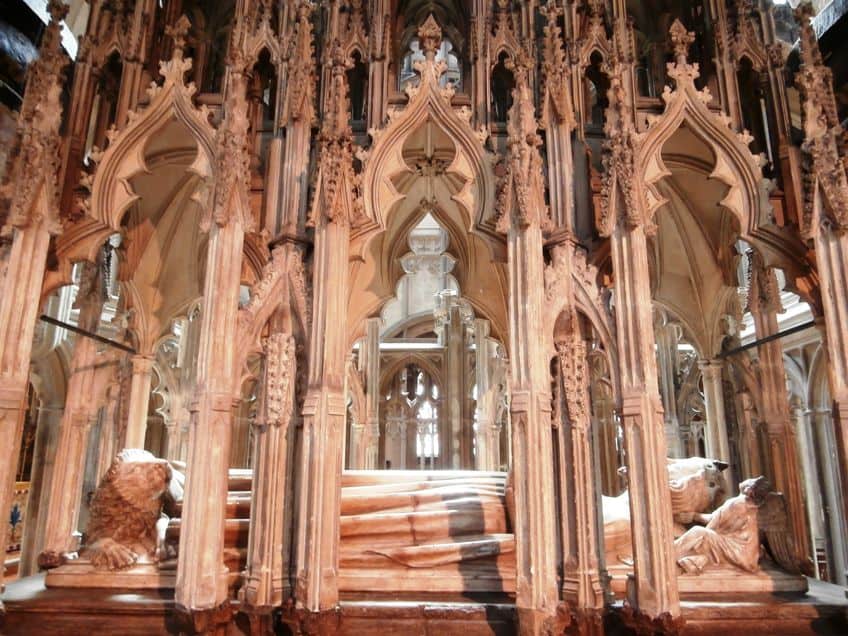
Subsequently, in the early 14th century, depictions of heavily veiled official mourners emerged. This sculptural technique was started by Louis IX in his memorials to his predecessors and next of kin, which are largely found at Saint-Denis and were badly destroyed during the French Revolution. Although there are earlier precursors, Louis IX’s initiatives did much to promote the concept of the dynastic tomb, and countless other significant persons followed suit.
The majority of carving virtuosity in England, just like in France, was invested in private graves and memorials.
Westminster Abbey is the greatest preserved Gothic mausoleum, with statues carved in a variety of materials (particularly bronze, Purbeck, alabaster, and freestone) that are complemented by flooring and tombs produced by Italian mosaic craftsmen hired by Henry III. Another outstanding example of English Gothic is Edward II’s tomb in Exeter Cathedral, which is famous for its magnificent medieval canopy.
German and Italian High Gothic Sculpture
The exquisite draped sculptures surrounding the choir of Cologne cathedral, as well as the spectacular Gothic statues on the Strasbourg cathedral’s western front, appear to be heavily influenced by the Joseph Master of Reims. As is customary, German sculpture is significantly more expressive than comparable French artworks. Nicola Pisano and his son Giovanni Pisano were two of the most renowned 13th-century sculptors in Italy. Nicola was known for his Gothic sculptures in the Siena cathedral and the Pisa Baptistery, whereas Giovanni’s pulpit at St. Andrea Pistoia, while structurally less refined, is emotionally far more powerful.
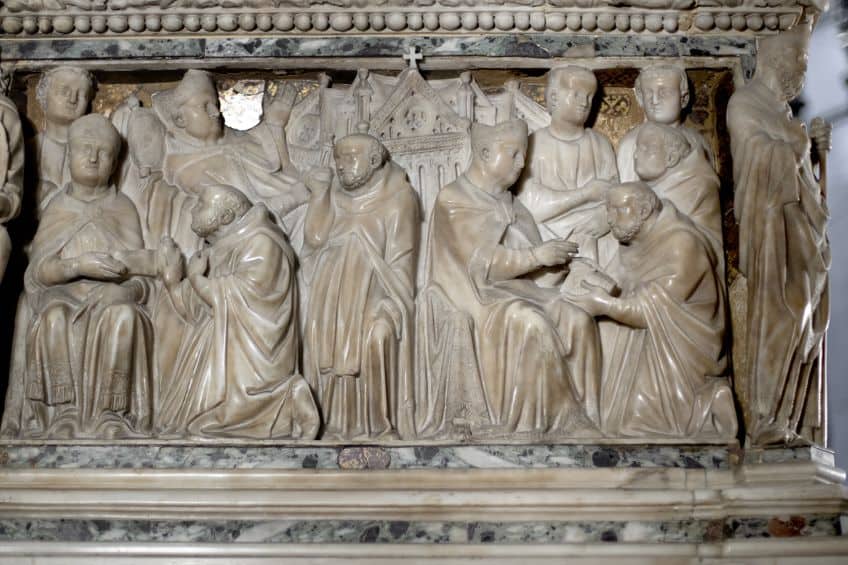
Giovanni di Balduccio sculpted a monument for the remains of St. Peter Martyr in Milan in the Pisano studio style. Arnolfo di Cambio and Tino di Camaino, both of whom worked at the Neapolitan court, were notable Pisano disciples. Arnolfo di Cambio’s Gothic statue is sturdy and motionless. He specialized in formal works such as the burial chapel and Pope Boniface VIII’s tomb. Tino di Camaino rose to prominence as a tomb sculptor, and the biggest collection of his works may be seen in Naples.
Andrea Pisano was another well-known Italian producer of Gothic sculptures.
His most notable Gothic statues were created in Florence, the most notable of which was the baptistery of Florence Cathedral’s bronze doors. Andrea Pisano was heavily influenced by Giovanni Pisano’s Gothic sculptures as well as the Gothic paintings of the Proto-Renaissance master Giotto, which drove him to create his figures built solidly and substantially.
Gothic Paintings
Despite the presence of Romanesque paintings on church walls and in holy texts, Europe was not prepared for painting to become a prominent public form of art. Tapestry artwork was still popular as a beautiful wall covering, although the majority of Gothic cathedrals, with their limitation of wall space, had a lower demand for wall paintings than Romanesque buildings. Rather, Gothic architects depended on stained-glass windows, which had grown significantly larger since the Romanesque era.
The Gothic idiom had a profound effect on other painting genres as well, such as illuminated manuscripts and altarpiece artworks.
 Scenes from the Life of Christ (c 1304 – 1306) by Giotto; Giotto, Public domain, via Wikimedia Commons
Scenes from the Life of Christ (c 1304 – 1306) by Giotto; Giotto, Public domain, via Wikimedia Commons
French Gothic Painting
Early Gothic paintings shifted away from the Byzantine art style and toward more realism, resulting in a gentler, more life-like look that lasted until the mid-13th century. In France, the style is most visible in a series of exquisite biblical manuscripts including Bible extracts supplemented by ethical interpretations and images structured like stained glass windows – made for the royal court of France. The style may be found in a number of manuscripts in England, including the Amesbury Psalter (c. 1240). Gothic painters in Germany abandoned this beautiful form in favor of a contorted, angular style known as the Zackenstil. In the Soest Altar (1230), for example, the drapery is represented in sharp angular shapes and frequently drops to a sharp tip suggesting an icicle.
The evolution of panel paintings and murals in Northern Europe was also influenced by Gothic illuminated manuscripts.
Gothic Book Painting
To understand Gothic book illustration, one should examine the illuminated manuscripts that streamed out of the numerous monasteries starting in the 13th century: missals, books of hours, apocalypses, psalters, and bibles, such as Jean Pucelle’s Hours of Jeanne d’Evreux (1328). The Gothic painter, no longer a simple component of the architectural ensemble, could let loose and indulge all his fancies in these masterpieces.
The figures are occasionally exaggerated to the point of caricature, as in contemporary fashion illustrations.

There are many grotesque monsters, as well as amusing or macabre elements. The kind grows more bizarre as it matures. There is no respite for the eyes. Intricate ornamental backdrops, fringes of ivy leaves made even spikier than nature intended, landscape backgrounds with groupings of exquisite flowers in the front, and images from modern life, pastimes, sports, dining, traveling, and cooking may be found everywhere. One would believe that life in northwest Europe in the 14th century was a gigantic jumble of colorful fascinating detail, a nursery stuffed with live toys.
High Gothic Painting
Contemporary sculpture of the time had a big effect on High Gothic painting. This was initially apparent in Paris, where Louis IX was a prominent sponsor. The early Gothic form was suddenly overtaken in an evangelary at Louis IX’s royal chapel of Sainte Chapelle by a drapery style embracing the huge, jagged folds of the Joseph Master. At the same time, there was a rising emphasis on detail, almost as a goal in itself. Faces, especially, became workouts in virtuoso drawing techniques.
While certain figurative features, like hands and faces, were mostly represented by lines, draperies and other forms tended to be portrayed in terms of light and shadow.
This study of light started around 1280 but is most closely identified with Master Honore, a great Parisian illuminator who worked between 1288 and 1300. It’s also probable that it was influenced by changes in Italian art. The French style was quickly adopted in England. Despite the fact that Henry III was not a bookworm, a multitude of manuscripts written for his family feature pictures in the exquisite and minute manner of Louis IX’s painters. Later developments in English painting, as shown in works such as the Queen Mary Psalter (c.1330), incorporated increasingly ornate border designs.
Italian Gothic Painting
Both Tuscany and Rome had strong visual traditions in the 13th century, and both were greatly inspired by the Byzantine Empire’s medieval artworks. Unfortunately, because most of the Roman art was eventually destroyed, proof for what was occurring in the capital must be located outside of the city, most notably at Assisi, where the church of St. Francis was adorned by Roman fresco artists, most notably Cimabue, between 1280 and 1300.
As with all Gothic ornamental art, stylistic modifications in Italy leaned toward more realism. Italian painters began to employ light to depict their figures around the end of the 13th century.

Italy, unlike Northern America, preserved a consistent tradition of large-scale paintings, which are often produced using the fresco technique, which involves color applied to and soaked up by new lime plaster. The artist Giotto di Bondone, whose iconic work was the Scrovegni Chapel paintings at Padua, was the preeminent Gothic practitioner of fresco painting, using biblical or hagiographic themes as subjects. Despite Giotto’s substantially heightened realism, he could not avoid the lure of his Byzantine forefathers, whose impact is plainly obvious throughout the piece. Duccio di Buoninsegna, the most renowned artist of the Sienese School of proto-Renaissance painting and designer of the Maesta Altarpiece (1311), and the Stroganoff Madonna (1300), best exemplifies the evolution of the Gothic painting style in Tuscany.
The latter was a superb Gothic panel artwork produced in tempera on wood. Duccio di Buoninsegna’s expertise in producing realistic space, on the other hand, was far inferior to Giotto’s, and his works lacked the same dramatic effect.
Simone Martini, who painted at the papal palace in Avignon, is undoubtedly the most celebrated of later Sienese and Florentine painters. Other notable painters included the Lorenzetti brothers, Ambrogio and Pietro. Italian artists had established a unique status in Europe by around 1350. Their distinct style of Pre-Renaissance painting, with its achievements in the art of narrative structure, set them apart from other European artists. Their advancements in depicting reality were not easily overlooked, and northern artists worked hard to convert Italian realism to northern needs.
Notable Gothic Artists
In the late 14th century, Gothic Art had evolved into an increasingly secular form known as International Gothic, heralding the Renaissance. Simone Martini is a famous artist from this era. Despite being surpassed by Renaissance art, the 18th and 19th centuries saw a Gothic Revival founded on nostalgia and romanticism. Let us take a closer look at several notable Gothic Artists.

Duccio di Buoninsegna (c. 1255 – 1319)
| Nationality | German |
| Date of Birth | c. 1255 |
| Date of Death | 1319 |
| Place of Birth | Siena, Italy |
Duccio di Buoninsegna, is the most prominent artist of the Sienese School and one of the most renowned medieval painters of the Italian trecento. Duccio di Buoninsegna combines the severe beauty of ancient Byzantine painting with fresh lyricism, as well as some of the new humanity espoused by the new Dominican and Franciscan orders. Working mostly with pigments and egg tempera, he created vibrant religious works.
His beautiful coloring, use of gold embellishment, and great drawing abilities aided in the birth of the International Gothic style and established the norm in Siena and abroad.
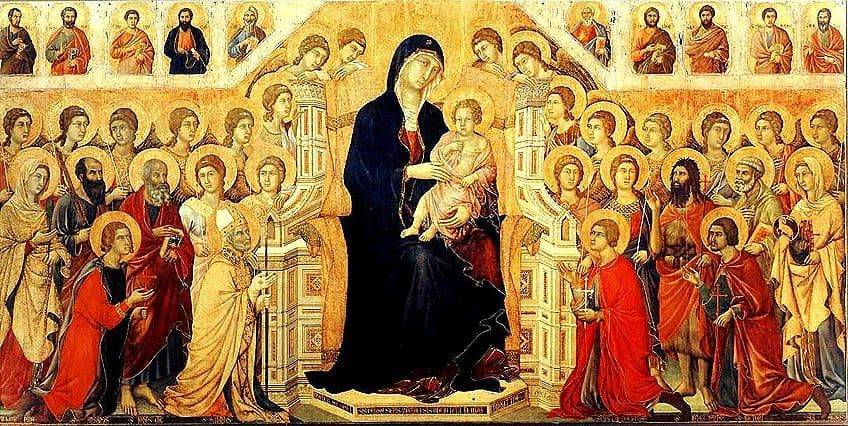
The Maesta Altarpiece (1311), a masterpiece of Gothic-style Christian artwork ordered by Siena Cathedral, and the Rucellai Madonna (1285) are his most famous works. His journey to France may have provided some motivation for his later works. However, art historians think that the major motivation came from a visit to Assisi, where he is said to have observed the fresco cycle of Saint Francis’ life, created by Giotto and his assistants.
This well-known set of fresco wall paintings was completed before 1296.
Pietro Lorenzetti (1280 – 1348)
| Nationality | Italian |
| Date of Birth | c. 1280 |
| Date of Death | c. 1348 |
| Place of Birth | Siena, Italy |
Pietro Lorenzetti, an early representative of the Sienese School of painting, was approximately 10 years older than Ambrogio Lorenzetti, his brother, although it is not definite that a 1305 record refers to this artist. He grew up during a period when the mature paintings of Duccio di Buoninsegna ruled the artistic environment, yet unlike this master, Pietro Lorenzetti had a highly dramatic, passionate character. After a rough start and tremendous effort to break free from Duccio’s heritage, he quickly began to turn towards Giotto, from whom he inherited the significant divides of space while adjusting them to Siena’s typical trecento style. Even though he is inspired by the aggressive components of Giovanni Pisano’s sculptures, his inherent skill is supported by a deep expression of sentiment, provided by colors whose tones are alternately dazzling and deep.
He is therefore able to translate Siena’s aristocratic legacy into a natural and human manner of depiction, whose independence is accentuated by an even broader choice of topic and a plastic and technical dynamism.
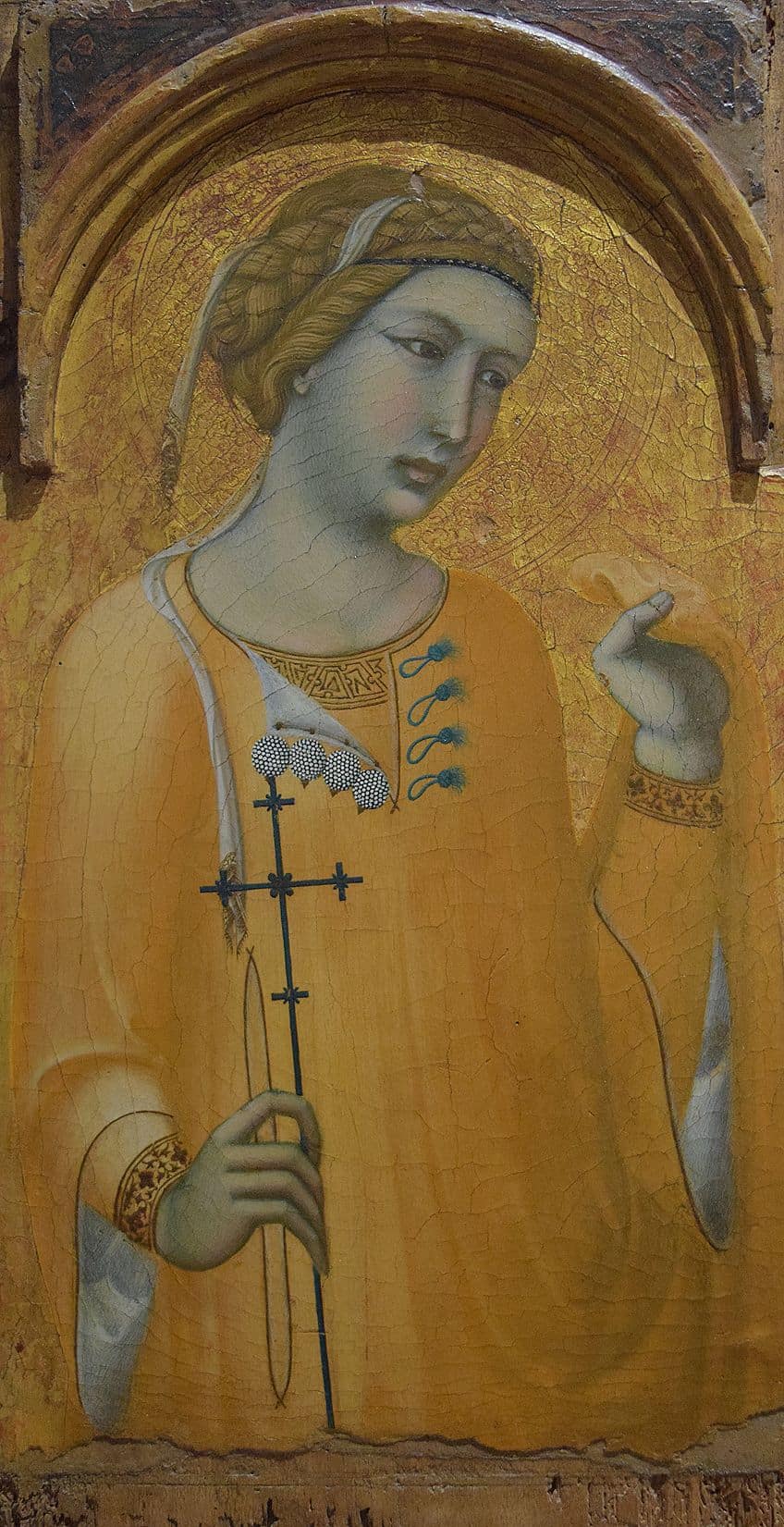
Simone Martini (1284 – 1344)
| Nationality | Italian |
| Date of Birth | c. 1284 |
| Date of Death | c. 1344 |
| Place of Birth | Siena, Italy |
Martini’s artwork was unmistakably Sienese. His work had a significant impact on the art style and form of Sienese artists in the years to come. Throughout his career, he upheld the Sienese heritage. The artist’s corpus of work stands in stark contrast to the austerity and monumentality of Florentine artwork. His art was distinguished by stylized, ornamental, soft qualities, courtly grace, and sinuous lines. Ivory carving and illuminated manuscripts impacted Martini’s work.
French art was introduced to Italy through the Via Francigena, a major pilgrimage and commerce route from Northern Europe to Rome.

One of his most important pieces is the Annunciation (1333), which he created for the Siena Cathedral. It was a triptych composed of three panels. Simone Martini inscribed the painting in 1333 alongside Lippo Memmi, his brother-in-law. The triptych featured dematerialized representations of Mary and Gabriel, with fine line rhythm. The complexity of his painstaking work encouraged many painters to emulate him.
None of his successors, though, could equal the intensity and bright outlines of his work.
Veit Stoss (1447 – 1533)
| Nationality | German |
| Date of Birth | c. 1447 |
| Date of Death | 20 September 1533 |
| Place of Birth | Horb am Neckar, Germany |
Veil Stoss, a Swabian sculptor, and wood carver, is regarded as one of the finest specialists in wood-carving throughout the Late Gothic era in Germany, before the creation of a true indigenous style of German Renaissance artwork, alongside Tilman Riemenschneider. He was also a skilled painter and engraver, and he rendered his characters with dynamic faces and actions that, when combined with the life-like pleats of their clothes, gave his characters a dramatic look. Stoss was born in 1447 in Horb am Neckar, Swabia, and studied painting at Nuremberg before marrying Barbara Hertz in 1473. Approximately four years later, he relocated his growing family to Krakow in Poland, to embark on his first substantial piece of Christian art, the grand High Altar of St Mary’s Church. The 13-meter-high and 11-meter-wide altarpiece artwork remains the world’s largest gothic wood carving.
It is made up of 200 exquisite limewood sculptures that have been colored and covered in gold foil. The altarpiece’s other items are manufactured from oak, while the background is composed of larch wood.

Tilman Riemenschneider (c. 1460-1531)
| Nationality | German |
| Date of Birth | c. 1460 |
| Date of Death | 7 July 1531 |
| Place of Birth | Heiligenstadt Im Eichsfeld, Holy Roman Empire |
Tilman Riemenschneider’s woodcarvings and sculptures are executed in the late Gothic style, however, his later work has mannerist elements. Particularly, Lorenz von Bibra’s tomb is regarded as one of the items that marked the shift from the Gothic to Renaissance art style. The intensity of the figures’ expressions, as well as their exquisite and beautifully folded clothes, distinguishes his works. The focus on the expression of inner feelings distinguishes Riemenschneider’s work from that of his direct forefathers.
Riemenschneider’s early success as a sculptor was due to the flexibility of his works, with much attention put into replicating garment folds.

This method of sculpting the clothing, as well as the distinctive oval features and eyes, was inspired by artwork from the 1470s Upper Rhine area, hinting that Riemenschneider learned his craft there or in Ulm. His later works lost some of the bulk of the earlier pieces, allowing for more efficient fabrication. Riemenschneider is regarded now as one of the earliest 15th-century sculptors who did not paint all of his figures.
Prior to the 1490s, practically every sculpture was painted in numerous layers by a separate artist, who was frequently more admired than the sculptor.
Gregor Erhart (1470 – 1540)
| Nationality | German |
| Date of Birth | c. 1470 |
| Date of Death | c. 1540 |
| Place of Birth | Ulm, Germany |
Originating from a line of woodcarvers in Ulm, Swabia, Gregor Erhart studied in the studio of his father, who was working in the city between 1469 and 1522 and was comparable only to Hans Multscher. Michael had previously assisted in the training of the legendary late Gothic woodcarver Tilman Riemenschneider, who proceeded to flourish in Wurzburg.
Because Gregor Erhart’s early sculptures are difficult to differentiate from that of his father and tutor, attributions are hotly debated among collectors and historians.
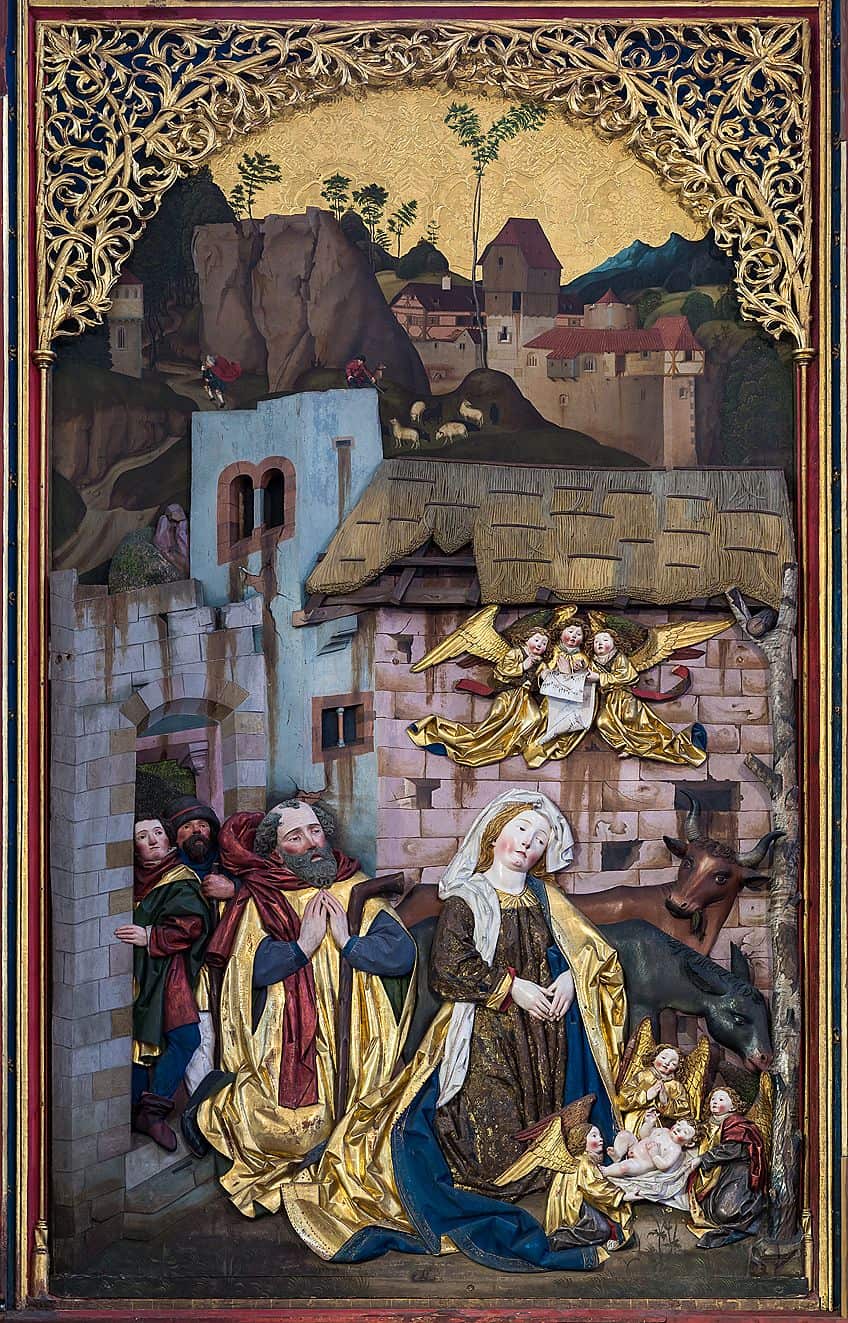
Their most significant cooperation was the carving of the Blaubeuren Altarpiece (1494), a work that represented the pinnacle of Erhart’s career and his developed style. Gregor Erhart earned a residency in the rich German merchant city of Augsburg in 1494, and two years later he became a master sculptor. He spent his whole professional life in the city, rising to prominence as its main sculptor within 10 years. Sculptures attributed to his studio, which combine Late Gothic and Renaissance principles, are based on a single recorded piece originating from the Cistercian Kaisheim Abbey, which was lost during WWII.
Gothic art is a type of art created in Northern Europe between the Middle Ages and the commencement of the Renaissance. It is recognized for the characteristic arched architecture of its churches, illuminated manuscripts, and stained glass, and is typically steeped in religious devotion. A revitalized emphasis on humanism, which took on a somewhat different tone than the later humanism of the Renaissance, resulted in more lifelike figurative sculptures that adorned the exteriors of churches and held religious treasures, which were becoming increasingly essential to a city’s prestige.
Frequently Asked Questions
What Is Gothic Artwork?
Gothic art revels in its eclectic beginnings, combining features of Byzantine and Romanesque forms and even borrowing from Islam. It grows and morphs to fit regional preferences and trends. The Gothic style had become worldwide in its expansion across Europe by the close of the Middle Ages, and its focus on realism fueled the revolution in art that thrived during the Renaissance, even though its building was substituted with classical proportions and straight lines.
Where Did the Term for the Gothic Style Originate?
The word Gothic was first used to describe the style by Renaissance authors and painters in the 16th century. Giorgio Vasari, an early art historian, notoriously reinforced the negative associations by characterizing Gothic art as hideous and barbarous since it did not adhere to classical principles. The Gothic Revival in England in the middle of the 1700s was the first to help the style shake off its bad reputation.
Jordan Anthony is a Cape Town-based film photographer, curator, and arts writer. She holds a Bachelor of Art in Fine Arts from the University of the Witwatersrand, Johannesburg, where she explored themes like healing, identity, dreams, and intuitive creation in her Contemporary art practice. Jordan has collaborated with various local art institutions, including the KZNSA Gallery in Durban, the Turbine Art Fair, and the Wits Art Museum. Her photography focuses on abstract color manipulations, portraiture, candid shots, and urban landscapes. She’s intrigued by philosophy, memory, and esotericism, drawing inspiration from Surrealism, Fluxus, and ancient civilizations, as well as childhood influences and found objects. Jordan is working for artfilemagazine since 2022 and writes blog posts about art history and photography.
Learn more about Jordan Anthony and about us.
Cite this Article
Jordan, Anthony, “Gothic Art – Explore Art and Sculpture from the Gothic Period.” artfilemagazine – Your Online Art Source. January 25, 2023. URL: https://artfilemagazine.com/gothic-art/
Anthony, J. (2023, 25 January). Gothic Art – Explore Art and Sculpture from the Gothic Period. artfilemagazine – Your Online Art Source. https://artfilemagazine.com/gothic-art/
Anthony, Jordan. “Gothic Art – Explore Art and Sculpture from the Gothic Period.” artfilemagazine – Your Online Art Source, January 25, 2023. https://artfilemagazine.com/gothic-art/.


